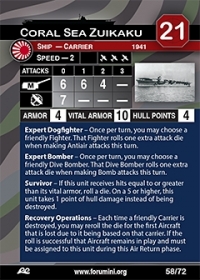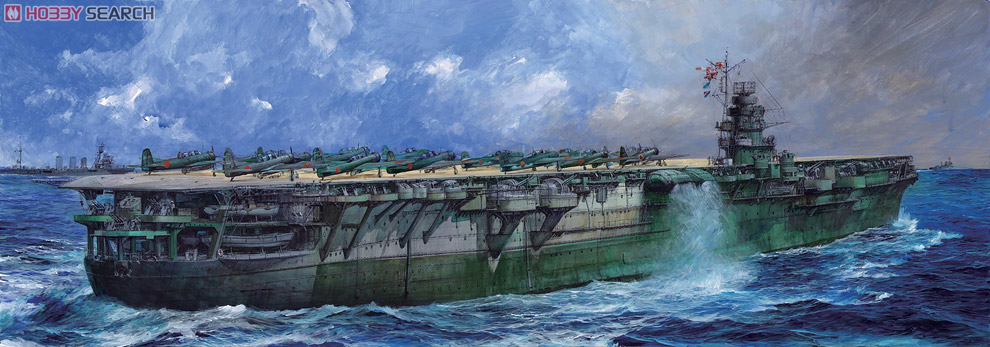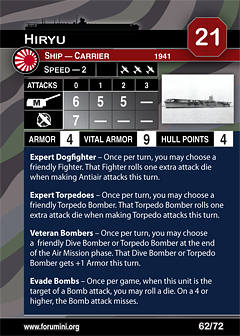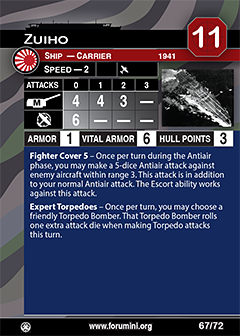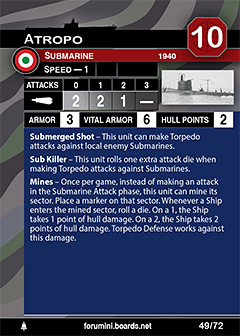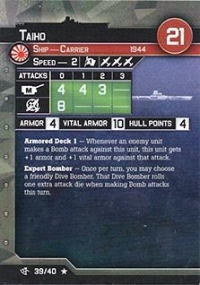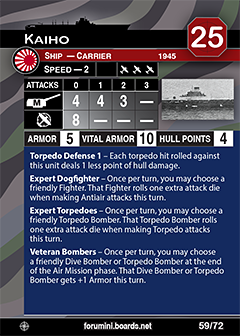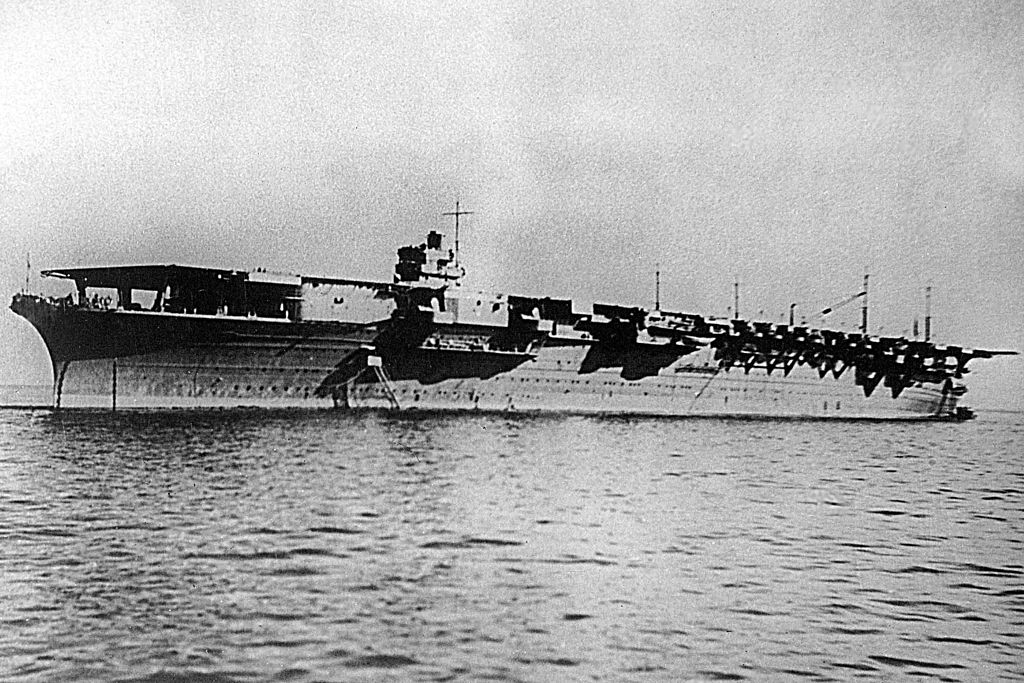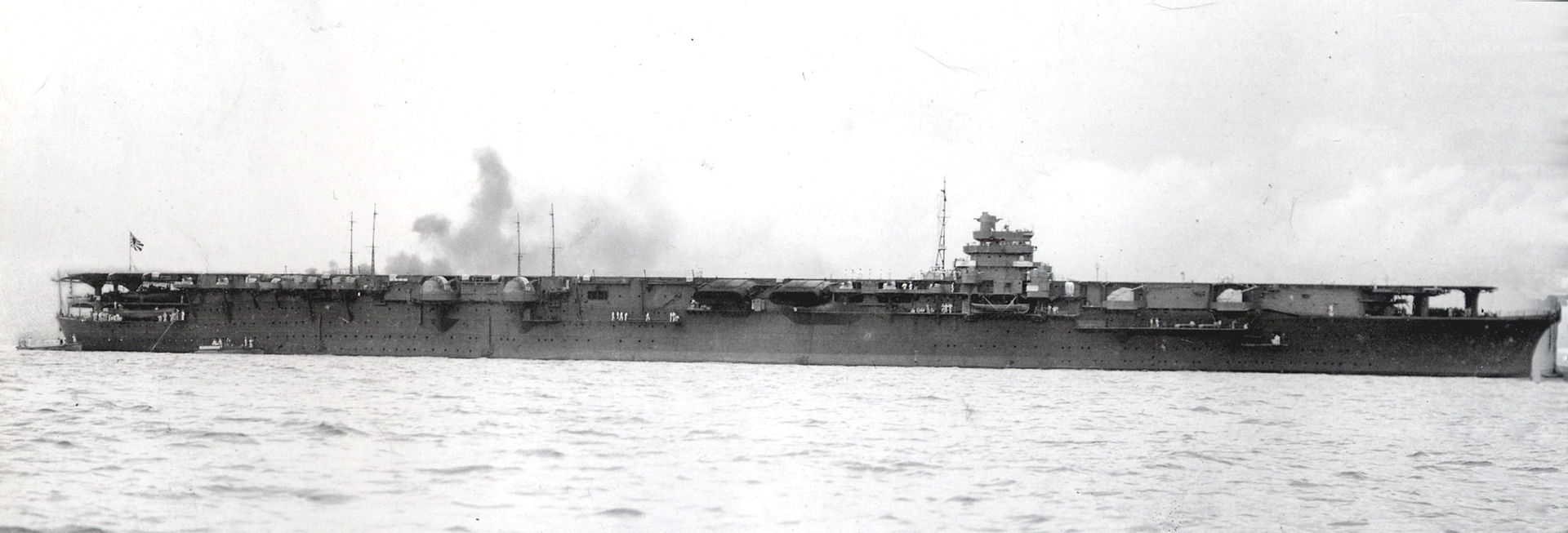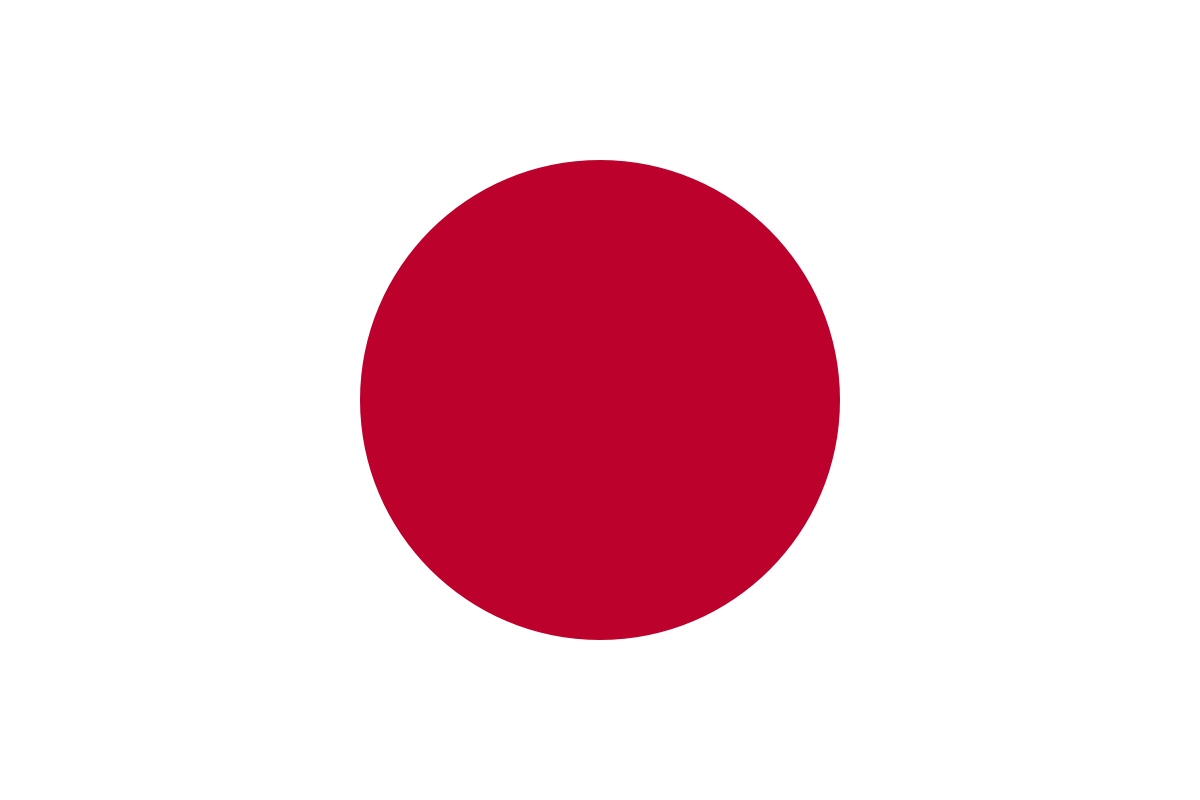Prototype: Zuikaku (Japanese: 瑞鶴 "Auspicious Crane") was a Shōkaku-class aircraft carrier of the Imperial Japanese Navy. Her complement of aircraft took part in the attack on Pearl Harbor that formally brought the United States into the Pacific War, and she fought in several of the most important naval battles of the war, before being sunk during the Battle of Leyte Gulf.
One of six carriers to participate in the Pearl Harbor attack, Zuikaku was the last of the six to be sunk in the war (four in the Battle of Midway and Shōkaku in the Battle of the Philippine Sea).
One of six carriers to participate in the Pearl Harbor attack, Zuikaku was the last of the six to be sunk in the war (four in the Battle of Midway and Shōkaku in the Battle of the Philippine Sea).
Class History: The two Shōkaku-class aircraft carriers were built for the Imperial Japanese Navy (IJN) in the late 1930s. Completed shortly before the start of the Pacific War in 1941, they were judged by historian Mark Peattie as arguably the best aircraft carriers in the world until the emergence of the American Essex class in 1943. With the exception of the Battle of Midway, they participated in every major naval action of the Pacific War, including the attack on Pearl Harbor, the Indian Ocean Raid, the Battle of the Coral Sea, and the Guadalcanal Campaign.
Their inexperienced air groups were relegated to airfield attacks during the attack on Pearl Harbor, but they later sank two of the four fleet carriers lost by the United States Navy during the war in addition to one elderly British light carrier. The sister ships returned to Japan after the Battle of the Coral Sea, one to repair damage and the other to replace aircraft lost during the battle, so neither ship participated in the Battle of Midway in June 1942. After the catastrophic losses of four carriers during that battle, they formed the bulk of the IJN’s carrier force for the rest of the war. As such they were the primary counterattack force deployed against the American invasion of Guadalcanal in the Battle of the Eastern Solomons in August. Two months later, they attempted to support a major offensive by the Imperial Japanese Army to push the United States Marines off Guadalcanal. This resulted in the Battle of the Santa Cruz Islands where they crippled one American carrier and damaged another in exchange for damage to Shōkaku and a light carrier. Neither attempt succeeded and the Japanese withdrew their remaining forces from Guadalcanal in early 1943 using the air group from Zuikaku to provide cover.
Their inexperienced air groups were relegated to airfield attacks during the attack on Pearl Harbor, but they later sank two of the four fleet carriers lost by the United States Navy during the war in addition to one elderly British light carrier. The sister ships returned to Japan after the Battle of the Coral Sea, one to repair damage and the other to replace aircraft lost during the battle, so neither ship participated in the Battle of Midway in June 1942. After the catastrophic losses of four carriers during that battle, they formed the bulk of the IJN’s carrier force for the rest of the war. As such they were the primary counterattack force deployed against the American invasion of Guadalcanal in the Battle of the Eastern Solomons in August. Two months later, they attempted to support a major offensive by the Imperial Japanese Army to push the United States Marines off Guadalcanal. This resulted in the Battle of the Santa Cruz Islands where they crippled one American carrier and damaged another in exchange for damage to Shōkaku and a light carrier. Neither attempt succeeded and the Japanese withdrew their remaining forces from Guadalcanal in early 1943 using the air group from Zuikaku to provide cover.
Country: Japan is an island nation in the Pacific Ocean with dense cities, imperial palaces, mountainous national parks and thousands of shrines and temples. Shinkansen bullet trains connect the main islands of Kyushu (with Okinawa's subtropical beaches), Honshu (home to Tokyo and Hiroshima’s atomic-bomb memorial) and Hokkaido (famous for skiing). Tokyo, the capital, is known for skyscrapers, shopping and pop culture.
Although legend has it that Japan was founded in 660BC, archaeologists agree that settlement in the Japanese archpelago dates back as far as 100,000 years. The Jomon Period (8000-c.300BC) is the earliest that has been studied. It is named after the 'jomon' or cord-marked pattern style of pottery of the period.
Although legend has it that Japan was founded in 660BC, archaeologists agree that settlement in the Japanese archpelago dates back as far as 100,000 years. The Jomon Period (8000-c.300BC) is the earliest that has been studied. It is named after the 'jomon' or cord-marked pattern style of pottery of the period.
Item created by: Lethe on 2015-05-31 17:46:30. Last edited by gdm on 2019-05-13 11:55:18
If you see errors or missing data in this entry, please feel free to log in and edit it. Anyone with a Gmail account can log in instantly.
If you see errors or missing data in this entry, please feel free to log in and edit it. Anyone with a Gmail account can log in instantly.


